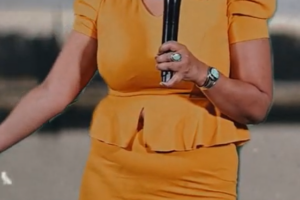Pavers around the Champlain Towers North swimming pool have been yanked up and drywall removed from a few condo hallways and closets.
Workers are going around with poles, enormous drills, building plans and all measure of gear. A construction worker with a tablet attached to his chest like a BabyBjörn infant carrier has been running ground-penetrating radar across newly exposed concrete.
They are extracting clues.
While search-and-rescue teams have spent the past two weeks digging through rubble after the Champlain Towers South collapsed on June 24, killing at least 79 people, the Washington, DC-based structural engineer hired to study the cause of that building failure has been at work a few doors down.
To find out what could have caused the 40-year-old condominium building to come crumbling down in the middle of the night, Surfside city leaders turned to Allyn Kilsheimer, who has spent the past half-century examining debris from calamitous disasters.
Having worked at the Pentagon after the Sept 11 attacks, as well as dozens of other sites including the Oklahoma City bombing and the Mexico City earthquake, he is now bringing his decades of experience to Surfside, where he wakes up each day at 2 am and begins working on what he calls “a 13,000-piece puzzle.”
“The key is to find the trigger. It wasn’t an act of God,” said Kilsheimer, an 80-year-old child of Holocaust survivors who likes to restore old cars and curse at people.
With the material he normally would use to examine a building collapse — debris — still unavailable to him, Kilsheimer has been conducting studies in the building’s sister tower.
Although widely acknowledged to have been in better shape, the Champlain Towers North was engineered and designed by the same companies as the building that fell. The details are not exactly the same — it has fewer apartments and the balconies are arranged differently — but Kilsheimer says the two buildings are similar enough that he hopes to glean information hidden in the concrete and steel.
“What I’m comparing is McIntosh apples with another kind of apple. They’re still apples,” he said when asked whether the two buildings made for an apples-to-apples comparison.
“So since I don’t have the South to look at standing up, I’m looking at the North.”
An examination of everything structural — concrete, metal, chunks of slab from the ground — is the first step in what is expected to be a lengthy process to determine what caused the catastrophic collapse. He plans an exhaustive review of the drawings of both buildings to see how they compare to what he actually found.
He can give lengthy recitations about reinforcing steel (he will wince if you call it “rebar”), waterproofing, weight-bearing loads and those disturbing photographs taken by the pool just before the collapse. But he has no prevailing theories, and suspects that he will wind up settling on a mix of factors.
On Friday, his crew went to several apartments in Champlain Towers North, removing drywall and drilling for samples of concrete, called “cores.” (Or as he explained it in layman’s terms: “a little round thing with a bunch of rocks.”) He studied the multicoloured specs and identified the sand and tiny pockets of entrapped air.
“This looks good,” he declared, noting that it did not come apart in his hands.
The next step will be sending the samples to labs in Minnesota and North Carolina, where they will be examined under a microscope and tested for things like chemical composition and how much weight or tension they can bear.
The strength of the reinforced steel will be tested, and so will whether rust has led to metal loss. Ground-penetrating radar will determine the thickness of the concrete. Along with the samples and strength tests, that should shed light on whether the building was constructed according to its initial drawings and the building code of the time.
His team is working on an apartment that was being remodelled, and a few others where owners allowed his crew to tear apart small sections of their apartments. On Friday, they drilled through a tiny room with a mezuza on the door, a reminder of the large number of Jewish families who lived there.
A woman in one fourth-floor apartment peered from the crack of her closed bedroom door, looking where the workers had covered her artwork with plastic while they drilled.
“I’m happy they’re doing it; it’s important,” said Marvin Adams Thomas, a resident of the Champlain Towers North who is known as Bud. “Doing this testing does two things: It gives psychological comfort and economic comfort. The more people test and realise the building is in good shape, which most of us believe it is, that makes it better for the residents and better for potential residents.”
Not all the residents have returned since the disaster, but many have. Kilsheimer said he would let his grandchildren stay there. If he ever finds something that says otherwise, he would inform everyone to get out, he said.
Chuck Whitaker, a veteran engineer at Labib Funk + Associates in California, began to work with Kilsheimer in the 1970s. Even in those early years, Kilsheimer was gruff and tough, but also fair and loyal, he said. He was brash, but cautious. He demanded a lot from his staff, including all-nighters on deadline projects, but Kilsheimer would be there all night alongside them.
Records show that Kilsheimer charges $350 an hour, not including his crew of 15 people, and $5,000 a day if he has to appear in a court proceeding.
“He unfortunately taught me some bad habits of working 80 hours a week,” Whitaker said.
Whitaker, who left Kilsheimer’s firm in the 1980s but has remained close to him, said many structural engineers were wary of collapse investigations because of the risks and complications, the gruesome nature of some of the work, and the challenge of reconstructing problems from rubble, instead of starting with a clean slate and engineering a whole new building.
As stressful as the work can be, Kilsheimer thrives on it, Whitaker said.
“He was born to work on building investigations,” Whitaker said.






















